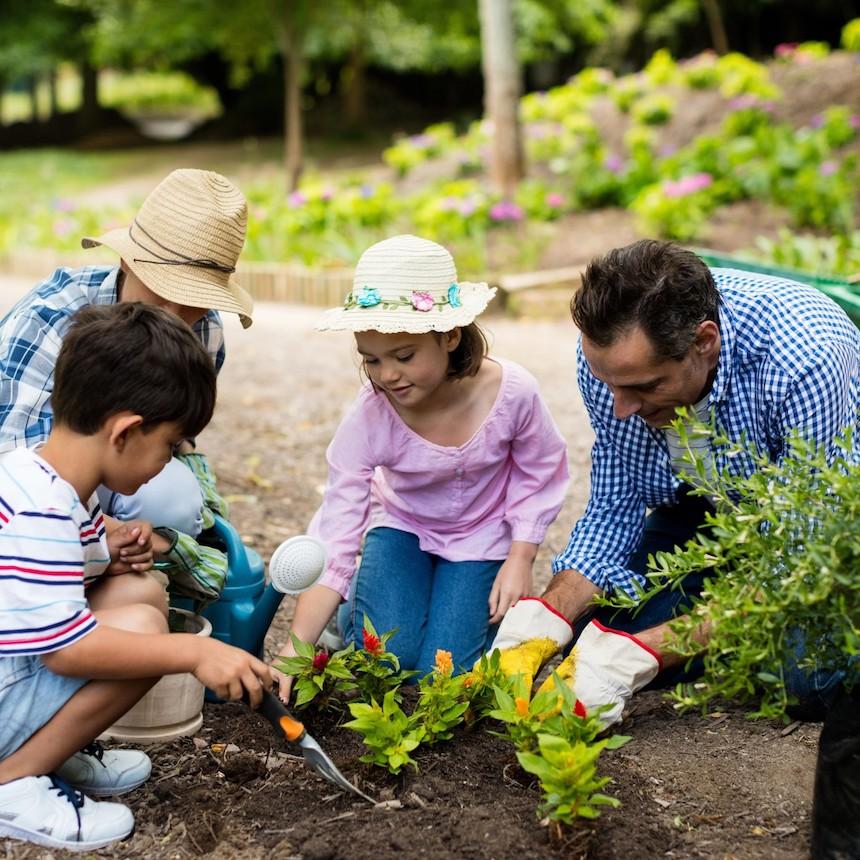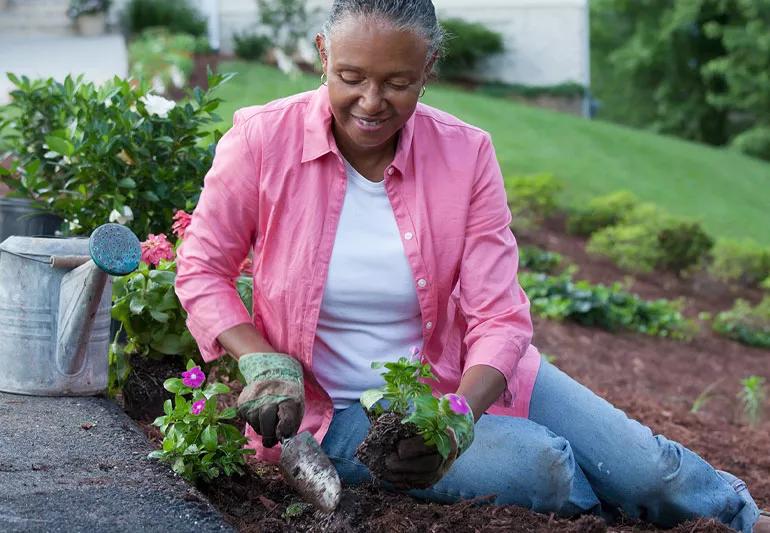Innovative Gardening Tips for Little Areas: Maximize Your Urban Garden
Innovative Gardening Tips for Little Areas: Maximize Your Urban Garden
Blog Article
Professional Gardening Tips for Creating a Lasting and Eco-Friendly Yard
Beginning on the journey to create a sustainable and environmentally friendly garden involves a collection of calculated options and practices that not just improve the charm of your space yet additionally add favorably to the environment. By selecting indigenous plants that are well-suited to your area, you can minimize reliance on chemical plant foods and pesticides while providing crucial assistance to local wild animals. Additionally, including water preservation techniques and natural gardening approaches plays a vital role in keeping a healthy ecological community. To discover more experienced insights and sensible techniques, allow us explore the crucial elements that specify an environmentally mindful yard.
Pick Indigenous Plants
Selecting native plants for your yard is a basic action towards achieving sustainability. Native plants are inherently adapted to the regional environment and dirt conditions, making them more resilient to regional insects and illness. This minimizes the demand for chemical pesticides and plant foods, hence decreasing ecological effect. In addition, indigenous plants commonly need much less water as soon as developed, adding to extra effective water usage.
Past their useful benefits, native plants play an essential role in sustaining neighborhood biodiversity. They give necessary environment and food sources for native wild animals, consisting of pollinators such as butterflies, , and birds. This fosters a well balanced community, which is crucial for the health and wellness of your garden and the surrounding setting.

Implement Water Preservation
Implementing water conservation methods is essential for preserving a lasting yard. Efficient water usage not just decreases the environmental impact however also guarantees that plants obtain adequate hydration without waste. One efficient approach is to make use of drip irrigation systems, which deliver water directly to the plant origins, decreasing evaporation and overflow. This targeted strategy can significantly decrease water usage compared to standard lawn sprinklers.
In enhancement, mulching is a useful method for saving water. By applying a layer of organic mulch, such as wood chips or straw, around the base of plants, garden enthusiasts can decrease dirt dissipation and preserve constant wetness levels. Compost additionally aids manage dirt temperature level and reduces weed growth, further adding to plant wellness.
Rain harvesting is an additional lasting approach. Installing rainfall barrels or other collection systems allows garden enthusiasts to store and capture rain, which can later on be used throughout dry durations. This not only conserves community water however also supplies an all-natural, chemical-free resource for irrigation.
Finally, picking drought-tolerant plant species can significantly decrease water requirements. These plants are adjusted to grow in low-water conditions, making them optimal for environment-friendly yards. gardening tips. Carrying out these water conservation methods will certainly promote a resilient, sustainable yard
Usage Organic Gardening Methods

Pest administration in a natural yard counts he said on incorporated bug administration (IPM) techniques. These consist of encouraging beneficial bugs, using all-natural killers like lacewings and ladybugs, and carrying out crop rotation to disrupt pest life process. Companion planting, where certain plants are grown together to fend off pests or bring in helpful pests, is another effective method.
Weed control is managed with mulching and hands-on elimination, instead of depending on herbicides. Compost not only reduces weeds yet additionally preserves dampness and enhances soil health as it breaks down. Organic composts, such as straw, timber chips, and leaves, are particularly valuable.
Produce Wildlife Environments
Creating wild animals habitats within your yard not only enhances biodiversity however likewise supports the community's equilibrium. By making rooms that draw in and maintain local animals, you can create a growing micro-ecosystem that profits both animals and plants. Beginning by including native plants, as these are well-suited to your local environment and give vital food and sanctuary for wild animals. Indigenous vegetation sustains a variety of pests, birds, and little mammals, adding to the environmental network.
Consider including a water feature, such as a fish pond or birdbath, to supply a regular water source. Water aspects attract a range of varieties, from amphibians to pollinators, improving the yard's vigor. Additionally, setting up birdhouses, bat boxes, and insect hotels offers safe nesting websites and urges biodiversity.
Leave some areas of your yard uninterrupted, enabling fallen leave trash and fallen branches to build up. By prioritizing these sustainable methods, your garden can become a shelter for neighborhood wildlife, advertising environmental wellness and sustainability.
Technique Composting and Mulching
A vital element of lasting horticulture, composting and mulching, substantially improves soil wellness and reduces waste. Composting includes recycling organic products such as kitchen scraps, lawn clippings, and leaves. These materials disintegrate to develop nutrient-rich compost, which acts as a natural fertilizer. Unlike synthetic fertilizers, garden compost improves the soil with necessary nutrients and useful microbes, fostering a healthier yard community.
Mulching, on the other hand, includes covering the soil surface area with inorganic or organic products, such as straw, timber chips, or shredded leaves. This method uses numerous benefits: it conserves soil moisture, reduces weed development, and moderates dirt temperature level. Mulch also progressively breaks down, including natural matter to the soil and additional improving its fertility.
To practice reliable composting, ensure your compost heap has an equilibrium of green products (rich in nitrogen) and brownish materials (rich in carbon), preserving ample aeration and dampness. gardening tips. On a regular basis turning find the pile accelerates disintegration. For mulching, use a 2-3 inch layer around plants, ensuring it you could look here does not directly contact stems or trunks to avoid rot
Verdict

Selecting native plants for your yard is an essential step towards accomplishing sustainability.Furthermore, integrating native plants can improve the aesthetic appeal of your garden. These plants are adapted to prosper in low-water problems, making them perfect for green yards. Implementing these water conservation approaches will certainly promote a resistant, sustainable yard.
In conclusion, establishing a environment-friendly and sustainable yard involves the strategic selection of native plants, the fostering of water preservation techniques, and the implementation of organic gardening techniques.
Report this page